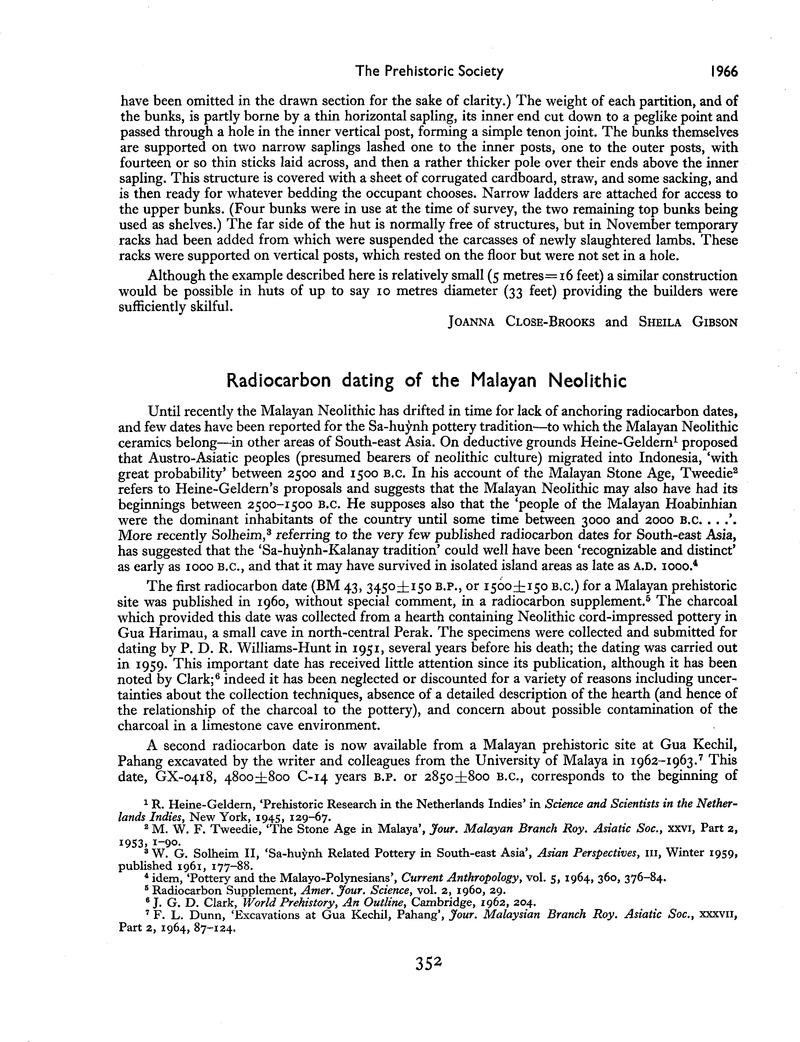Article contents
Radiocarbon dating of the Malayan Neolithic
Published online by Cambridge University Press: 27 May 2014
Abstract

- Type
- Notes
- Information
- Copyright
- Copyright © The Prehistoric Society 1966
References
page 352 note 1 Heine-Geldern, R., ‘Prehistoric Research in the Netherlands Indies’ in Science and Scientists in the Netherlands Indies, New York, 1945, 129–67Google Scholar.
page 352 note 2 Tweedie, M. W. F., ‘The Stone Age in Malaya’, Jour. Malayan Branch Roy. Asiatic Soc., XXVI, Part 2, 1953, 1–90Google Scholar.
page 352 note 3 Solheim, W. G. II, ‘Sa-huynh Related Pottery in South-east Asia’, Asian Perspectives, III, Winter 1959, published 1961, 177–88Google Scholar.
page 352 note 4 idem, ‘Pottery and the Malayo-Polynesians’, Current Anthropology, vol. 5, 1964, 360, 376–84.
page 352 note 5 Radiocarbon Supplement, Amer. Jour. Science, vol. 2, 1960, 29Google Scholar.
page 352 note 6 Clark, J. G. D., World Prehistory, An Outline, Cambridge, 1962, 204Google Scholar.
page 352 note 7 Dunn, F. L., ‘Excavations at Gua Kechil, Pahang’, Jour. Malaysian Branch Roy. Asiatic Soc., XXXVII, Part 2, 1964, 87–124Google Scholar.
page 353 note 1 These dates compare with that of 1770 ± 140 B.C. obtained for the site of Ban-Kao excavated by the Danish-Thailand expedition in the neighbourhood of Kanchanaburi. The date is quoted from Sørensen, Per in Felicitation Volumes of South-east Asian Studies, II, Bangkok, 1965, 307Google Scholar. The site yielded an inventory of markedly ‘Chinese’ aspect with Lung Shan pottery, including tripod, hollow-necked and shouldered bowls and pedestalled vessels; stone tools including shouldered adzes; stone bracelets; shell knives; and antler harpoon-heads. Material from the excavations may be seen in the National Museum, Bangkok, and a preliminary account has been given by Sørensen, in ‘North-South Indications of a Prehistoric Migration into Thailand’, East and West, N.S., vol. 14, Rome, 1963, 211–17Google Scholar—Editor.
- 10
- Cited by




